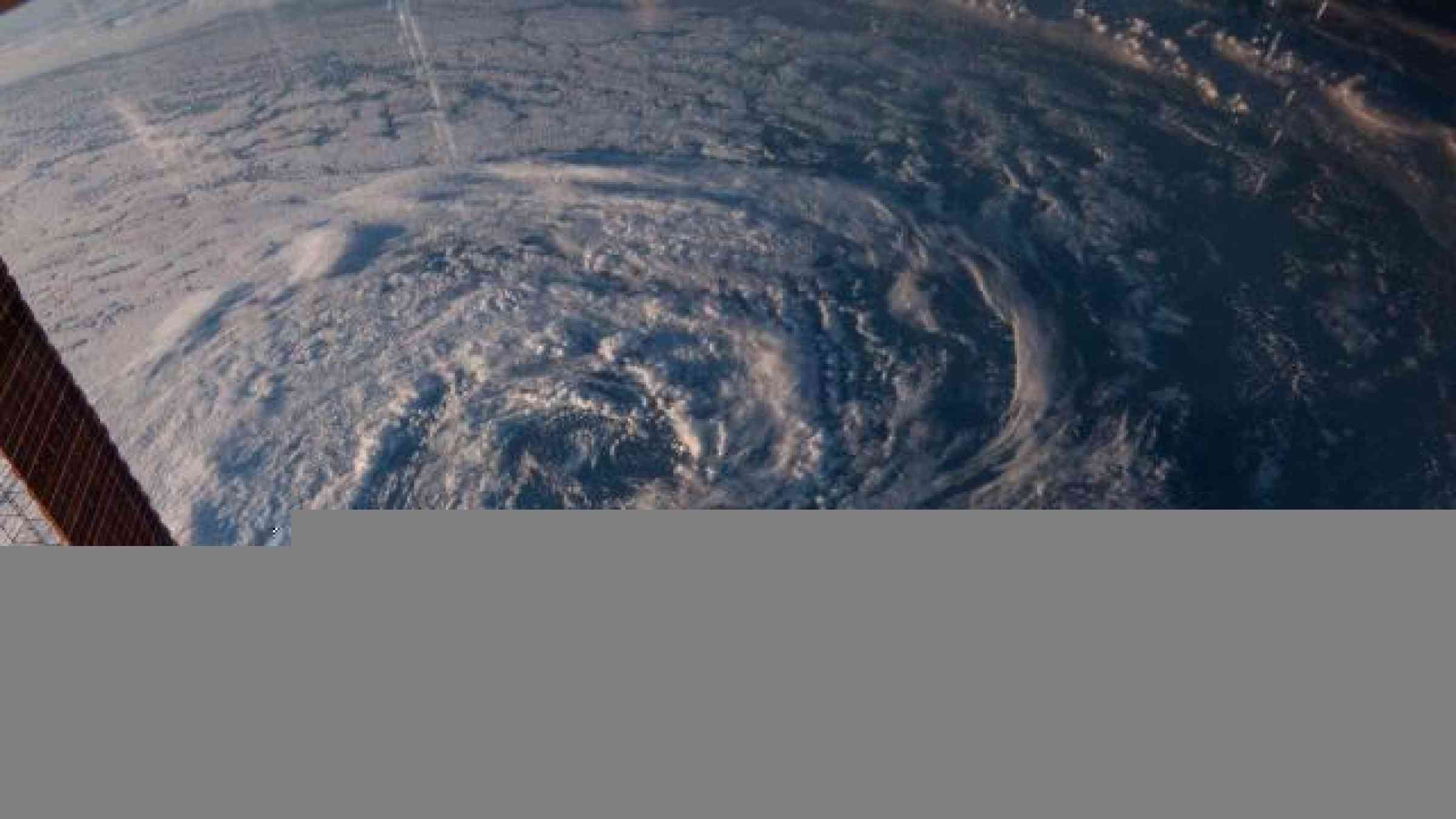Rebuilding the future: The role of humanitarian aid in climate resilience

Stories in the Caribbean tell of a time before satellites and computers. A time when dust, rain and wind were the early warning systems people relied on to predict major storms during the Atlantic hurricane season. Families would wake up and a hazy sun would predict a hurricane was on the horizon. Erratic rain, wind and the movements of animals would provide telltale signs that the old god Hurakán was on his way.
Today, we have much more advanced systems that provide us with crucial information about developing storms several days to weeks in advance. Yet, despite this new technology, individual hurricanes still have the power to cost us billions of dollars (for some islands, upwards of 200 per cent of their gross domestic product) and thousands of lives.
In the aftermath of hurricanes that inflict this level of havoc, humanitarian aid and consequently, development aid, are likely to flood into affected islands and countries. However, it’s important to keep in mind why exactly it is that these countries are so vulnerable to hurricanes in the first place. Although fully hurricane-proof infrastructures do not exist, can we do better?
Environmental disasters such as hurricanes do not play out in a vacuum. Social and economic factors dictate which countries and communities will be hardest hit and require the most humanitarian aid. Increased flooding, for example, is not just caused by storm surges and increased rainfall, but also by poor infrastructure. Food shortages following environmental disasters are not only caused by killed livestock and destroyed cropland but also poverty. Likewise, the likelihood of injury due to building collapse increases where there is a lack of education and a lack of access to communication technologies.
One of the areas of highest concern for an island, during the aftermath of a hurricane, is its waste management system. In small islands, waste management systems are very variable. Waste collection capacity is often so stretched that it only services a portion of the population and the collected waste often ends up in landfills which have long reached their designed capacity. A waste management system can be entirely wiped out by a single hurricane, landfills can flood, sweep contamination into communities. If an island is not able to recover in time, this can cause disease to spread throughout the country.
Another important aspect is chemicals. Hurricanes can cause toxic pollution by mobilizing chemicals contained in consumer goods that are being washed off—damaging areas where chemicals are used and sites contaminated by hazardous waste. This can wash mercury and other toxic materials into local water systems and ultimately into the sea. Hurricanes can also cause explosions or fires in chemical plants and refineries—polluting the air and soil.
Rebuilding waste management systems and chemical facilities is not easy, and definitely not inexpensive—especially for vulnerable communities. Foreign organizations can help by providing humanitarian aid that will increase resilience and make communities less vulnerable.
The ideas of resilience and vulnerability are sustainability concepts that explain why some countries and communities are harder hit by environmental disasters than others. We must keep this in mind when we coordinate humanitarian aid to countries affected by hurricanes and other natural disasters.
The way we rebuild an island, city or country, from the first minute of humanitarian aid to the last, will affect how that island or country reacts to the next major hurricane that comes along. If done well, humanitarian aid can save a country vast amounts of money and even lives during future storms. We must urgently find ways to effectively fight hurricanes and other natural disasters through proper preparation, rather than solely reactive measures.
“After any disaster, the immediate focus will and should always be on search and rescue, providing shelter and food and other lifesaving assistance. But without the specialist and thematic support provided by organizations such as the UN Environment Programme and United Nations Office for the Coordination of Humanitarian Affairs Joint Unit and its response partners to minimize the risk of people being exposed to environmental hazards in the air, in the water, through rubble and hazardous waste or affecting agricultural production or polluting fisheries and harming livestock, much of that relief effort will be undermined and the effects of the initial disaster could be both longer and more devastating than we imagine,” Regional Humanitarian Affairs Officer for Latin America and the Caribbean, Dan Stothart, says.
Hurricanes and other natural disasters are increasing in intensity due to climate change. Research must focus on how best to adapt to these changes and build resilient societies, as well as on the role humanitarian aid can play in achieving this. Identifying avenues to integrate the concepts of vulnerability, resilience and sustainability into humanitarian aid will bring us one step closer to this goal.
This Humanitarian Day, let’s envision islands that are like anchors—unafraid of wind or rain. If the old god Hurakán comes back this year, we need to have the capability to rebuild social and economic systems that will withstand future storms.
To this end, UN Environment is working around the world to respond to natural disasters, industrial accidents, and human-induced crises. We help countries and communities prepare for crisis, and we intervene in the aftermath of crisis to identify acute environment risks. We also work with countries that are emerging from crisis to help them strengthen environmental management and address environmental risks that could have serious social and economic impacts.
We must work together with governments, industries and organizations to prepare realistic goals and targets for more resilient infrastructures in the Caribbean. Islands are not just drowning—they are also being blown away. It is our duty to keep them afloat, and anchored.